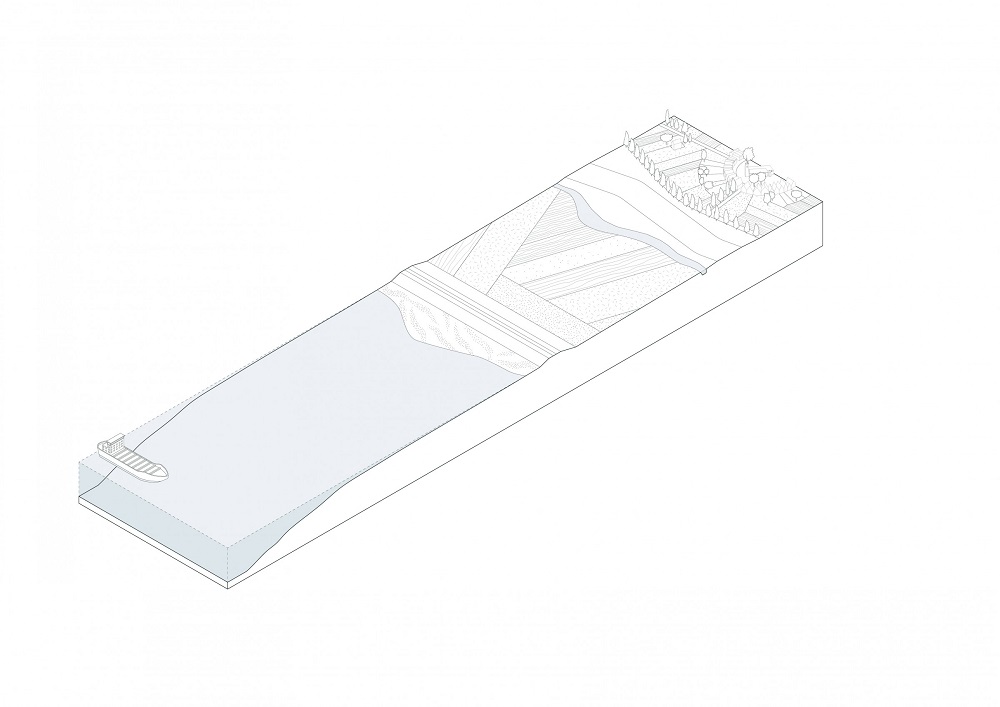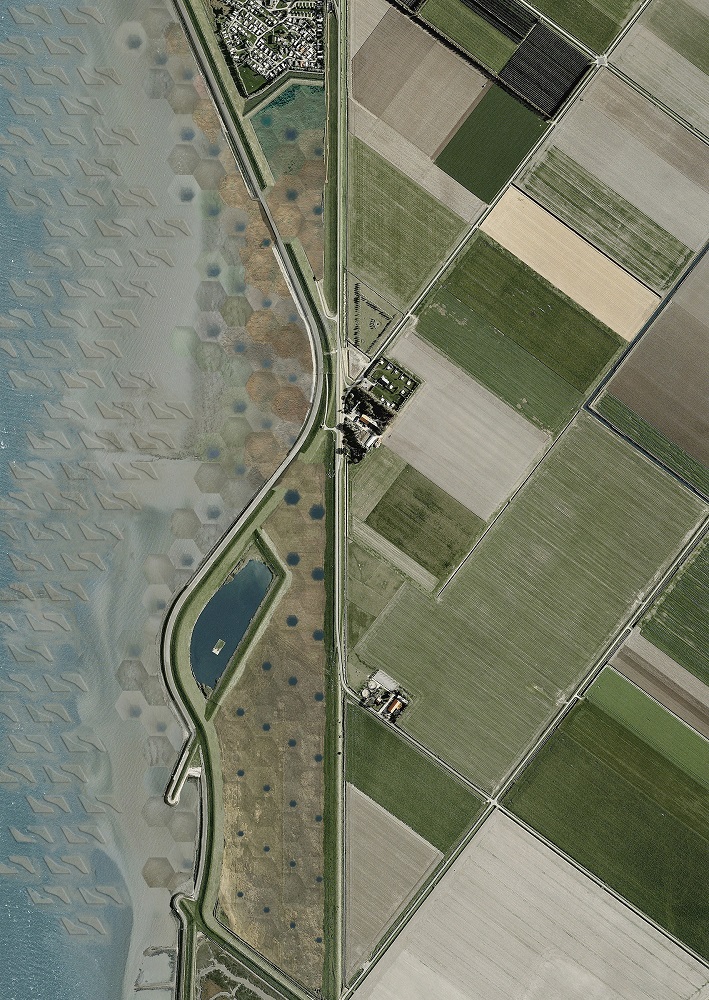Neil Moncreiff’s graduation project proposes a productive and protective ecosystem, located on a test site at Oosterschelde in the province of Zeeland. It constructs four new spatial typologies, for seeweed plantations, mussel-pole fields, oyster reefs and salt marsh meadows.

New estuarine field
Can you explain your choice of subject?
I chose to do an Urbanism masters to broaden the scope of my landscape architecture practice but landscape has still featured prominently in my final project. My interest is in the junction between natural, urban, productive and cultural infrastructures. In the conscious combining of the needs of all these systems as a hybrid landscape.
What or who are your sources of inspiration?
The traditional Dutch approach to constructing and managing landscape as well the more recent acknowledgement that natural values absolutely need to be included within these systems is something that is far less evident in the Australian context I am used to. This idiosyncratic approach to country as well as the unique visual landscape is has produced is something I am happy to have experienced.
Can you point out the key moment in your graduation project?
The design phase of my project, though comparatively short, made it clear to me that a strong visual character was absolutely key to what I was hoping to do and to the strength of a new constructed landscape

Existing landscape at Oosterschelde
Project text
Located on a test site at Oosterschelde in the province of Zeeland, this graduation project presents a proposal for a productive and protective ecosystem. It constructs four new spatial typologies, for seeweed plantations, mussel-pole fields, oyster reefs and salt marsh meadows. The intention behind this mix of ecological infrastructures is to achieve far-reaching environmental advantages. The proposed compounding of different loops is to maximize the yield. These loops include wave attenuation and the promotion of complex relationships between nutrient and carbon cycles and the habitats on site.

New spatial typologies
In this project, new functional and administrative systems can overlap so that solitary communities and urban centres can engage with one another. The new networks and the cooperation attendant on them are needed to distribute the cultivated biomass, local energy and heat as well as food products. This new land use, essential for protection against flooding, generates a complex new set of economic, cultural and social connections. The cultural and productive advantages and ecological and social synergies of the developed ecological infrastructures are to be tested over a 100 km2 area, as well as the potential for these new productive and protective land uses to shape the visual and cultural qualities of the landscapes for a more complex and varied delta.

Ecological benefits and cycles of remediation
These proposals are a response to the restrictions of the current situation in the delta. The Delta Works are the protective infrastructure we have today. Yet they restrict the natural processes in the estuary which in pre-Delta Works times shaped the physical, social and economic landscapes there. The flood protection provided by the Delta Works meshes closely with the existing infrastructure. This has degraded the natural habitats and smothered biodiversity. Promoting conditions beneficial to urban and agricultural land uses has been at the cost of natural processes and habitats.

New spatial typologies
As sea levels rise, the static system of dams, dykes and barriers will become increasingly ineffective. A reevaluation of current Dutch water management strategies could see a return to estuarine conditions in the Southwest Delta and natural systems and habitats would be able to develop, partly through ‘de-poldering’. This would generate new dynamic infrastructures that develop in tandem with the context, including the rising sea level, and would provide enduring protection against high water. These new infrastructures focused on habitat health could also promote sustainable social and economic structures in urban areas.

Proposal for Oosterschelde
Name
Neil Moncrieff
Contact
email
School/discipline
Technische Universiteit Delft / Faculteit Bouwkunde
Start master thesis
September 2016
Graduated
June 2018
What are you doing now?
I am working as a Landscape / Urban Designer with Posadmaxwan
What do you hope/want to achieve as a designer in the near and/or distant future?
I hope to continue to work at the junction between natural and urban systems at all scales but particularly at the strategic level.
Link to thesis publication

New territorial edge
Jury text
“[…] De buitengewoon uitgebreide studie levert een mooi handboek op waarin een groot aantal aspecten aan bod komt die gerelateerd zijn aan het doel van het afstudeerplan om een productief en beschermend ecosysteem te ontwikkelen voor Zeeland. […] Het plan is bedoeld om zowel de economische potentie van Zeeland te vergroten als de bescherming tegen de zee toekomstbestendig te maken en daarbij de ecologische kwaliteit te verbeteren. Die ambitie is lovenswaardig. Het stelt een aantal interessante technologische oplossingen voor die gebaseerd zijn op bewezen concepten. […]”